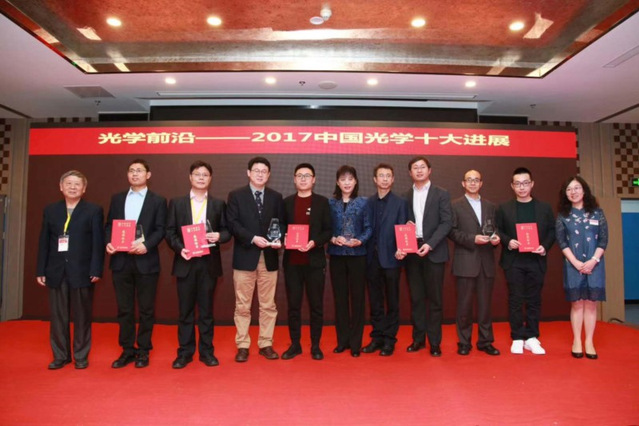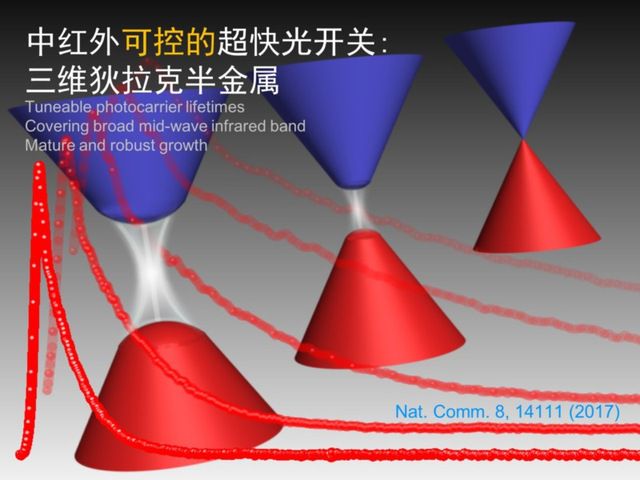The research achievement “Mid-infrared optical switch: Thin films of three-dimensional Dirac semi-metal,” by Professor Wang Fengqiu, Nanjing University’s School of Electronic Science and Engineering, and his research team, was selected to be one of “China’s Top Ten Optics Advances in 2017,” announced the Chinese Laser Press at its press conference on the evening of March 13, 2018, in Shanghai.
The paper by the team was published in Nature Communications [8, 14111 (2017)].
The Chinese Laser Press initiated this selection with the aim of introducing optics-related articles with significant academic and applicable values which are written by researchers within China proper but published in renowned international journals, and it hopes to promote the spread of these achievements in China.

China’s Top Ten Optics Advances (Basic Research) Award Ceremony
Taking advantage of mid-infrared ultrafast pump-probe spectroscopy, Professor Wang and his research team (including Professors Xiu Faxian of Fudan University, Li Jianfeng of University of Electronic Science and Technology of China, and Zhang Chao of University of Wollongong, Australia) systematically investigated the thin films of Cd3As2, a three-dimensional topological Dirac semi-metal grown in a molecular beam epitaxy (MBE) system.
The results of this innovative research confirmed for the first time that Dirac semi-metal constitutes an exceptional switch material for high-performance mid-infrared pulsed lasers, thus filling an important technological gap in mid-infrared optoelectronics and advancing the application of mid-infrared pulsed lasers and the spectrum technology. The related technology thus developed has enabled the team to apply for two national invention patents.

Ultrafast Photocarrier Relaxation Control in Dirac Semi-metal
This paper was co-authored by doctoral student Zhu Chunhui, Professors Meng Yafei and Wang Fengqiu, all from Nanjing University’s School of Electronic Science and Engineering. Professors Wang Fengqiu, Xiu Faxian and Li Jianfeng are corresponding authors.
Their research was supported by Professors Xu Yongbin, Zhang Rong, Shi Yi and academician Zhu Shining, and the experiment was mainly carried out at the university’s School of Electronic Science and Engineering and the Collaborative Innovation Center for Artificial Microstructure.
The project was funded by China’s Ministry of Science and Technology, National Natural Science Foundation of China, National Young 1,000 Talent Plan, and Jiangsu Shuangchuang Team Program.
Source: Website for viewing the contents of the paper.